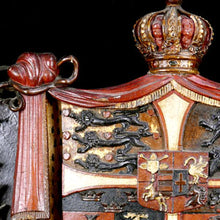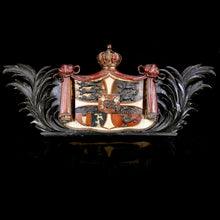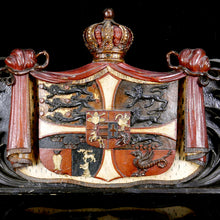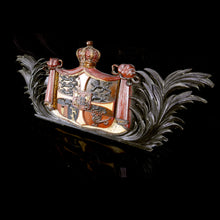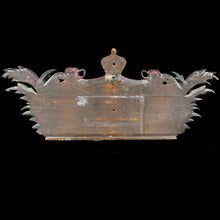An Early Nineteenth Century Danish Royal Warrant Holder’s Sign, 1820
- Regular price
- £2,800
- Sale price
- £2,800
- Regular price
-
- Unit price
- /per
Adding product to your cart
Width: 96cm (38in)
Polychrome carved wood. Danish royal coat of arms, surmounted by a central crown over draped lambrequin and flanked by palm fronds. This version of the Greater Coat of Arms of Denmark was used from 1819 to 1903 and include the stockfish of Iceland, the ram of Faroe Islands, and the polar bear of Greenland.
King Christian IX of Denmark (1818-1906), who ruled Denmark from 1863 to 1906, was not originally expected to ascend the throne. A modestly-raised fourth son of a junior royal branch, he became heir presumptive in 1853 due to King Frederick VII’s lack of heirs. Christian married Princess Louise of Hesse-Kassel, whose strong character and dynastic ambitions earned the couple the title ‘Father and Mother-in-Law of Europe’ thanks to their children’s prominent royal marriages across Europe. Christian became king shortly before the Second Schleswig War, during which Denmark lost significant territory to Prussia. Though unpopular domestically, his international influence grew through Queen Louise’s family diplomacy resulting in the marriages of Princess Alexandra to Albert Edward, Prince of Wales (later Edward VII) and Princess Dagmar to Tsarevich Alexander (later Emperor Alexander III of Russia). His second son became King George I of Greece (reigned 1863-1913). Christian IX’s extended family gatherings became informal summits of European monarchies, excluding the Prussians, whom Queen Louise and her daughters disliked. He died in 1906, leaving a legacy as patriarch of a European royal dynasty, with descendants on the thrones of Denmark, Greece, Norway, and Russia.






